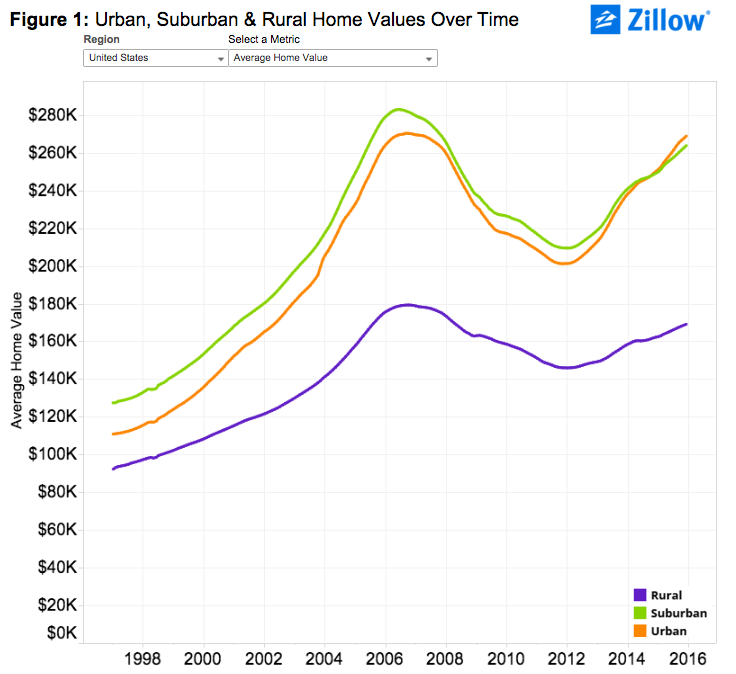Last year, we described the widening gap between typical housing values in cities and suburbs as the “Dow of cities”: Just as differences in stock prices signal the performance of companies, variations in average home prices are a market signal of the performance of cities. High and rising prices, relative to the overall market, are an indicator that people value what a city offers.
The original data for this analysis came from a report prepared by investment advisory firm Fitch, which combed through 25 years of its Case-Shiller housing price indices to compare changes in home values of homes in four concentric circles in each of the nation’s largest metropolitan areas. That analysis showed that homes in the most central neighborhoods appreciated 50 percent more after 2000 than their peers in each of the more peripheral neighborhoods.

Last week, the real estate analytics firm Zillow released its analysis of zip code-level data that tackles the same broad question. Zillow assigned each zip code in the nation’s largest metropolitan areas to one of three categories—urban, suburban, or rural—based on its analysis of survey data about consumer perceptions and their correlation to some of the key characteristics of zip codes, like population density. They they used this classification to track the change in home values for urban, suburban, and rural areas in each of the nation’s largest metropolitan areas from 1997 through 2015.
Overall, they find that urban home values now surpass suburban home values on average. The crossover, according to Zillow’s numbers occurred in November 2014. Today, the average urban home is worth about $269,000, compared to $264,000 for the average suburban home. On a per square foot basis, the somewhat smaller urban homes have been worth more than their suburban counterparts since the late 1990s. Zillow reports that gap has widened, and now the typical consumer pays about 25 percent more per square foot for an urban home ($198) than for a suburban one ($156).
Of course, values vary by market. Thoughtfully Zillow has included metropolitan level data for the nation’s largest metropolitan areas. You can drill down to individual metros and see how the pattern of price changes varies by neighborhood type over the past two decades.
The growing premium that households pay for urban locations compared to suburban ones is an indication of the growing value of cities, and also an indication that we’re facing a shortage of cities.

